
Tana River Climate Change & Livelihoods Restoration Project (T-CLIRP)

A case study of the Tana River Climate Change & Livelihoods Restoration Project (T-CLIRP) by World Vision Kenya that sought to build the resilience of women and youth as the direct beneficiaries to better adapt to climate change in nine villages of Garsen North and Kipini East Wards, Tana River County.
Tana River County is one of the four counties in which the Kenya government declared a disaster emergency due to climate change. For decades, Tana River County has suffered perennial calamities that have affected livelihoods. With four consecutive failed rainy seasons, this community is experiencing its worst drought in at least 40 years. Models of future climate projections show that Tana River County will remain highly susceptible to extreme weather events. Climate change also threatens to disrupt biodiversity ecosystems; plants such as amaranth and insect species like bees have disappeared from the county, putting the local communities that rely on them at risk. With a population of more than 370,000, approximately 100,000 people in Tana River County are affected when a climatic disaster hits.
In response to this, World Vision Kenya (WVK) implemented the Tana River Climate Change & Livelihoods Restoration Project (T-CLIRP), which sought to build the resilience of women and youth as the direct beneficiaries to better adapt to climate change in nine villages of Garsen North and Kipini East Wards, Tana River County. The project interventions included the rehabilitation of communal rangelands, the Farmer Managed Natural Regeneration (FMNR), re-greening efforts through school environmental clubs, renewable and clean energy solutions, and entrepreneurial and financial literacy skills. With support from GSMA, the Ushahidi platform powered the use of geo-tagging and crowd mapping to aid evidence generation towards advocacy for improved regenerative practices on natural resource management to support vulnerable communities’ food security and livelihoods and mitigate climate change.
At the start of the project, Ushahidi conducted an information-gathering session to understand the data points which were of importance to T-CLIRP stakeholders. In this discussion, it was also established what channels were most appropriate to collect the information. SMS and USSD shortcodes were found most ideal for feedback gathering because they are easy to recall, as compared to standard telephone numbers. They are typically 4 digits and have the ability to send a large number of messages at a consistent rate. For T-CILRP, Ushahidi secured dedicated shortcodes from telecommunications provider Safaricom for SMS service 23102 and on USSD service *603#. Exchange of information with the community was zero-rated and with no charges incurred by anyone wanting to provide feedback to the surveys. This was intentional to remove any barriers to the use of the platform and to innovatively leverage low-tech solutions that the community is already familiar with.
Ushahidi worked alongside World Vision Kenya and GSMA to conduct informative training for community members from Tana River County on how to share feedback on their experiences of climate change and its effects on their livelihoods. Administrators of the platform from World Vision Kenya were also trained on how to respond to messages and analyze them to aid decision-making.
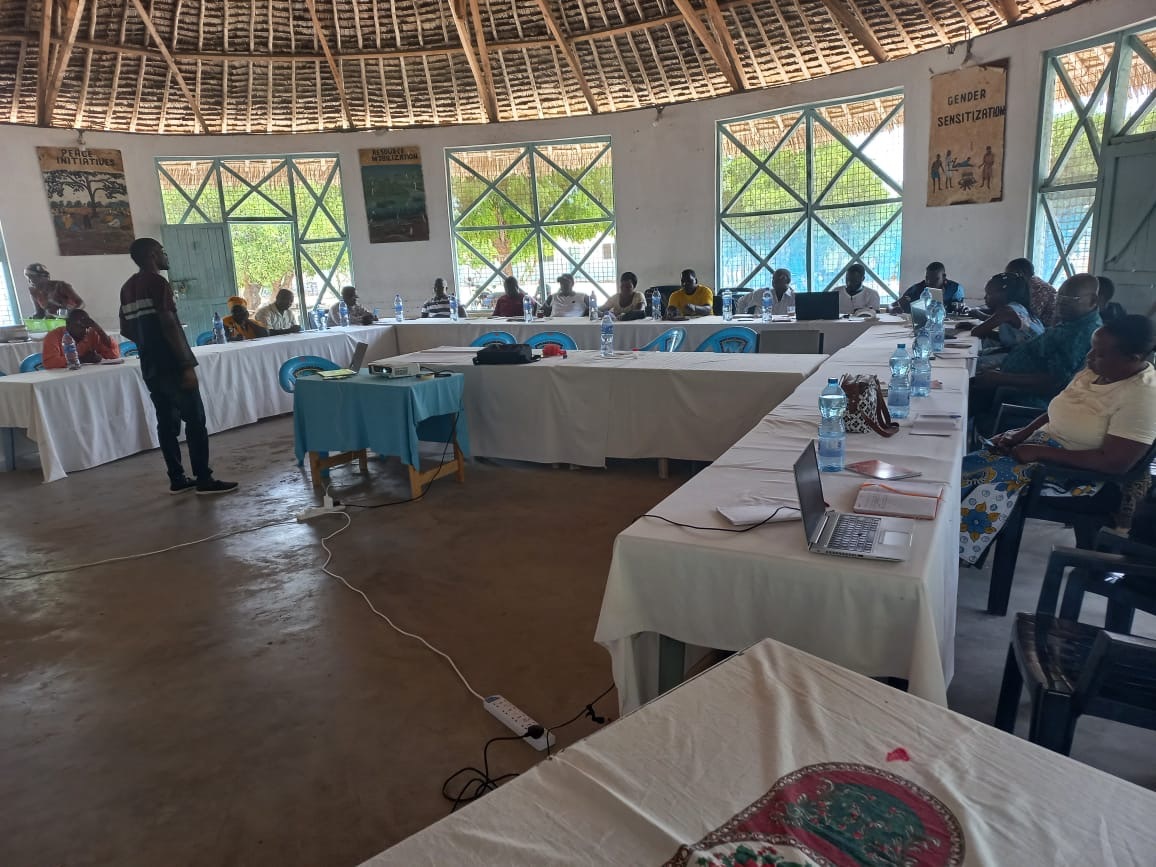
In compliance with the Data Protection Act. 2019, Ushahidi being the data processor, initiated contact with community members in the database by seeking their consent to receive and share messages from the project. A consent form stipulating the rights of the project beneficiaries to share their feedback data was also provided in the initial message. Some of these rights included: erasure, opt-in/out, rectification, data portability, and not be subject to automated decision-making.
For the T-CILRP, a sample of 250 community members was presented with survey questions to examine the effect of climate change on their livelihoods. Each week, they were asked to share their opinions and lived experiences around the topic of climate change. This sample of community members was randomly selected from community stakeholders in 9 villages in Garsen North and Kipini East wards of Tana River County. The villages were Shauri Moyo, Kaloleni, Sailoni, Vumbwe, Kizuliani, Kenze, Tosi, Luvu and Mikameni.
Data collected showed that firewood and charcoal was the major source of energy used for cooking. Firewood and charcoal cooking is an age-long practice in rural communities like Tana River, and it is constantly fed by cutting trees. There is a need to introduce and popularise the use of improved cooking technologies with a view to protecting the climate.
It was deduced that most households in Tana River rely on a wide range of activities, and their income bases concentrate around crop and livestock production. There is a need to provide them with information on climate-adaptive practices since they are prone to multiple stressors, including variability in climate, over-exploitation, and environmental instability.
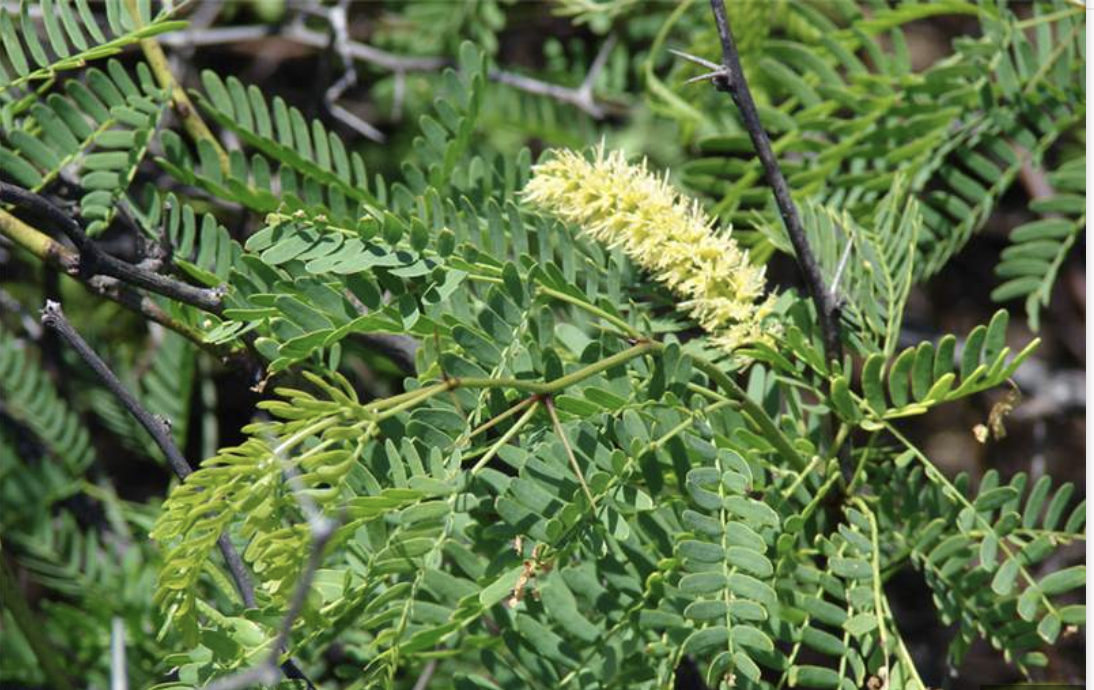
Respondents from Tana River County also shared what energy sources they use for lighting. Globally, lighting accounts for nearly 5% of global CO2 emissions. Data collected indicated mixed use of energy sources for lighting; however, it is commendable that solar is a primary source used by many community members for lighting in Tana River. Bio-gas and bio-materials received no responses, despite their climate-positive nature. Respondents were also asked to share the main environmental challenges facing their households. Majority of participants who responded indicated drought as being a major challenge for their families. This was followed by floods. A land weed species called prosopis juliflora (image above), commonly known as “mathenge”, was also highlighted as an issue by some of the respondents. Respondents highlighted issues like lack of food, drought, hunger, increased commodity prices, and food insecurity as some of the issues resulting from the environmental challenges they highlighted. Uncontrolled livestock and wild animals are other issues that end up arising due to drought and famine.
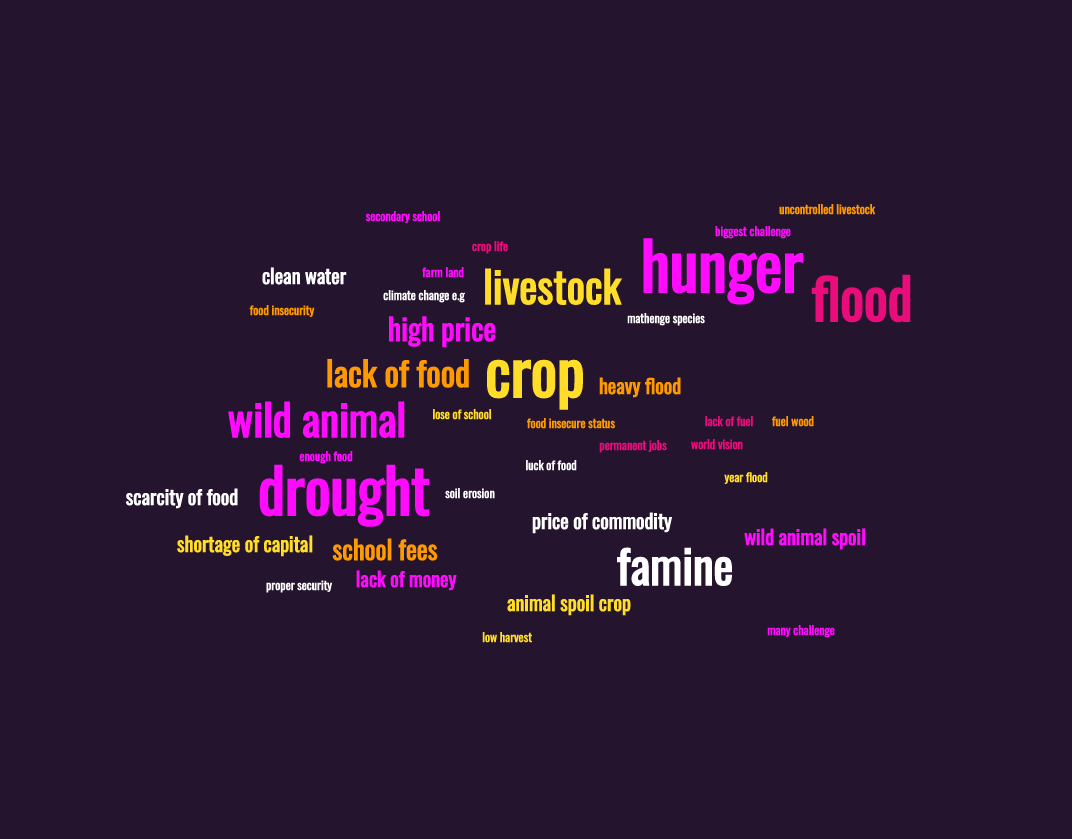
The respondents also voiced ways in which they felt they could be supported to counter the environmental issues they highlighted. Notable solutions included tree planting initiatives, irrigation support through drilling boreholes and water pumps, provision of farm inputs to support arid farming, and financial assistance. Alternative forms of livelihood were also suggested, like setting up fishponds and vegetable farming.
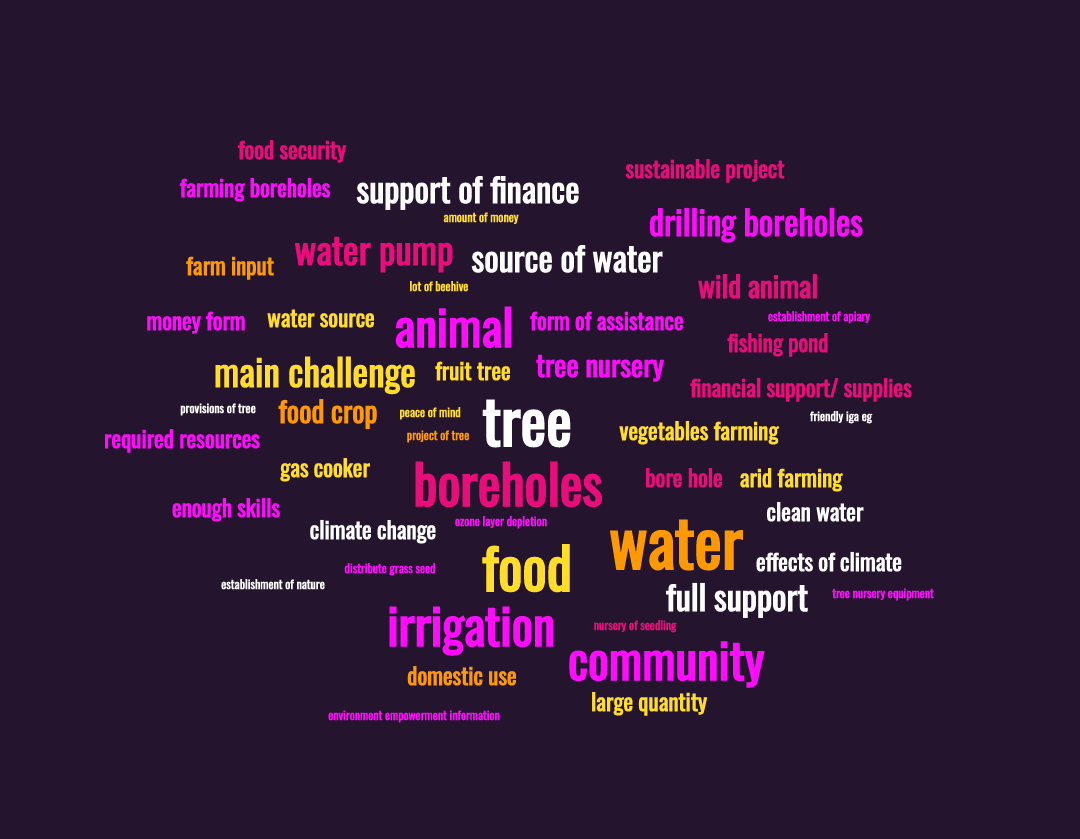
While many climate solutions require leadership from governments, we might also need changes from within regular households. The feedback indicates that communities are engaging in community efforts like tree planting, reducing detrimental activities like firewood use, adopting solar use, cutting down “mathenge”, and environmental conservation practices in general. However, some admitted that they are doing nothing and indicated the need for leadership to improve their stance on climate change before they can do something too.
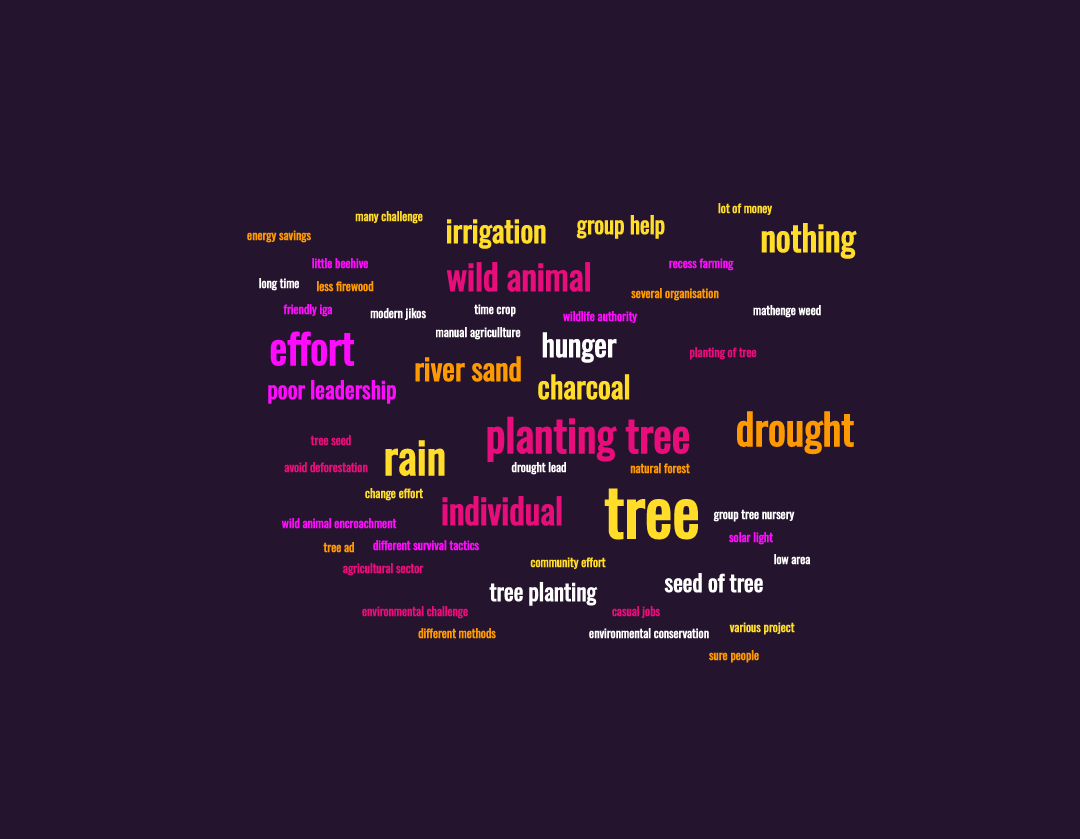
On the issue around any actions the government is taking to counter the challenges, majority of responses received indicate little to no actions from the county government to counter the noted environmental challenges. **Some responsents mentioned how pro-environmental initiatives like tree nurseries are taxed more than businesses engaging in charcoal and firewood.**The community members shared many important ways in which they felt the county government might join them in overcoming the environmental challenges they currently experience. Some of the notable ones are constructing boreholes, provision of good seeds for tree planting, engaging in drought resilience projects, supporting alternative energy like gas, and providing better education. It is important to highlight that some responses pointed towards financial incentives like low-interest loans, subsidizing supplies of pro-environmental resources, and provision of relief items. This is a possible indicator of the need for livelihood support to reduce the pressure households exert on the environment.
The engagement had minimal technology issues registered from the respondents. While only SMS and USSD channels were leveraged, it is important to diversify the data sources to be able to collect even more information from underrepresented groups like vulnerable women and the elderly, persons with disabilities and the illiterate. For these important categories, the offline mobile application coupled with data collection champions identified from the community might be useful.
The regular interface between stakeholders representing the community and project team (World Vision Kenya) and technology innovation support (Ushahidi) convened by GSMA helped to ensure alignment throughout the implementation. It also facilitated quick cycles of feedback and actionable communication to happen. One highlight from this pilot project in Tana River County is that the community’s collective intelligence surfaced a paradox in one of the local taxation ordinances. Tree nursery owners were being taxed more than their peers who engaged in cutting trees to produce charcoal and firewood. This report was gathered through the Ushahidi platform and validated during public forums held to discuss the issues and receive feedback from the Tana River County community. The local leadership responded by tabling this as a county assembly discussion to amend this local tax ordinance.
Ushahidi looks forward to scaling this project based on the positive feasibility gained from this pilot in Tana River County. Please find the link to the deployment.